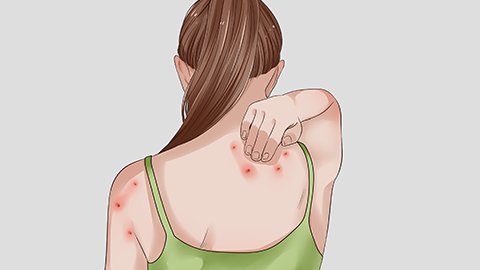How is scabies caused?
Generally, scabies is caused by infection with the human scabies mite. Specific causes include direct skin contact transmission, sharing personal items, close daily contact transmission, cross-infection in group settings, and low immunity. Detailed explanations are as follows:
1. Direct Skin Contact Transmission
Scabies mites are primarily transmitted through direct skin contact. Hugging, shaking hands, or sleeping together with someone infected allows the mites to crawl from the infected person's skin onto the skin of a healthy individual, then burrow into the stratum corneum (outer skin layer) to parasitize and reproduce, causing infection. This mode of transmission is common among family members or intimate partners. The longer the contact duration, the higher the risk of infection; therefore, direct skin contact with infected individuals should be avoided.

2. Transmission via Shared Personal Items
Personal items such as towels, clothing, bedding, bed sheets, and combs used by individuals infected with scabies may harbor residual mites or their eggs. If healthy individuals use these items, mites can transfer from the objects to the body and subsequently invade the skin, causing infection. These objects often have direct skin contact, providing a transmission medium for scabies mites. Therefore, sharing personal items with others should be avoided as much as possible.
3. Transmission through Close Daily Contact
Living together long-term with someone infected with scabies—even without direct intimate contact—can still result in infection due to exposure to mites remaining in the environment. Scabies mites can temporarily survive in the environment, and indirect infection may occur when touching furniture surfaces, door handles, or other objects previously touched by an infected person, which is unfavorable for infection prevention.
4. Cross-Infection in Group Settings
In crowded group environments such as dormitories, nursing homes, and prisons, where there is frequent personnel turnover and high shared living space, scabies mites can easily spread to others if one person becomes infected, leading to cross-infection. In such environments, personal items are often stored closely together, and frequent contact increases the range and speed of mite transmission. Therefore, infection control measures should be strengthened in group settings.
5. Increased Susceptibility Due to Low Immunity
Older adults, children, and individuals with chronic diseases or those taking immunosuppressive drugs long-term—whose immune systems are compromised—have weaker skin barrier functions and lower resistance to scabies mites. These individuals are more susceptible to infection after exposure, and their symptoms may be more severe with slower recovery. Low immunity reduces the body's ability to eliminate parasites, increasing the risk of infection. Thus, these individuals should pay extra attention to protective measures.
In addition, frequently visiting crowded places with poor hygiene conditions may also increase the risk of scabies infection. In daily life, attention should be paid to personal hygiene, including regular bathing, frequent changing of clothes, and regular cleaning and disinfection of bedding. If someone nearby is diagnosed with scabies, prompt isolation is necessary, contact with their belongings should be avoided, and measures should be taken to prevent the spread of infection.





